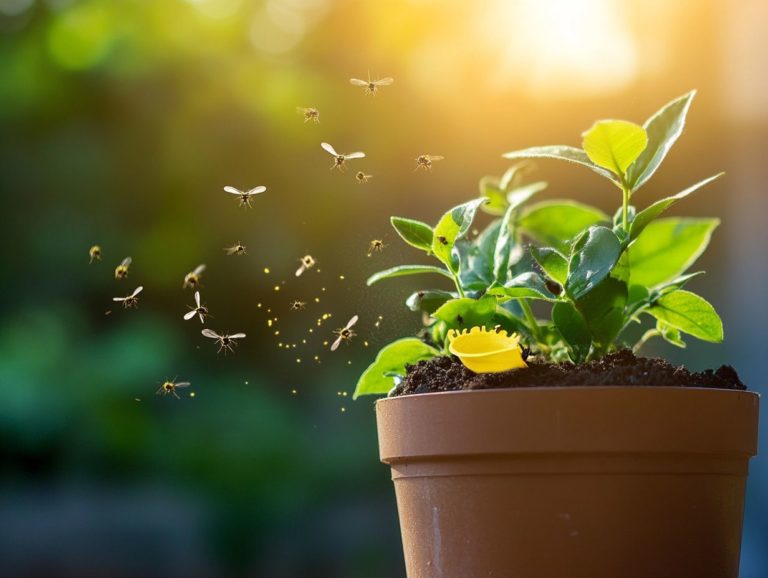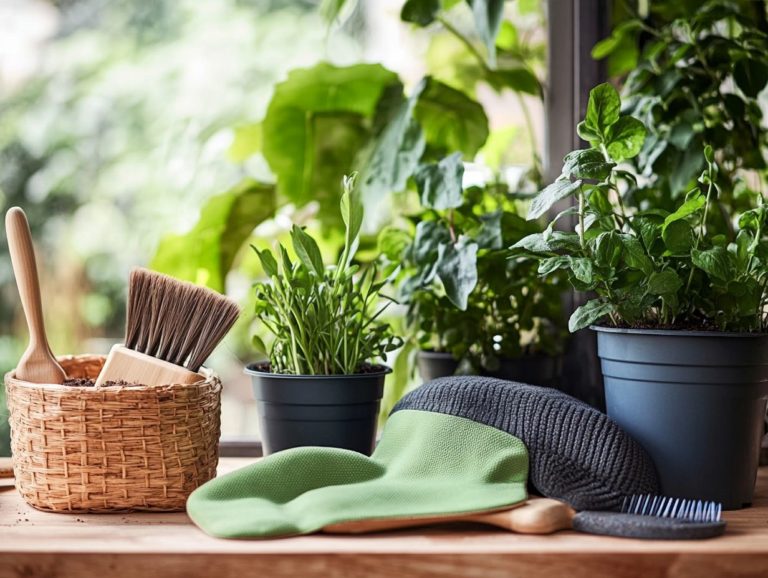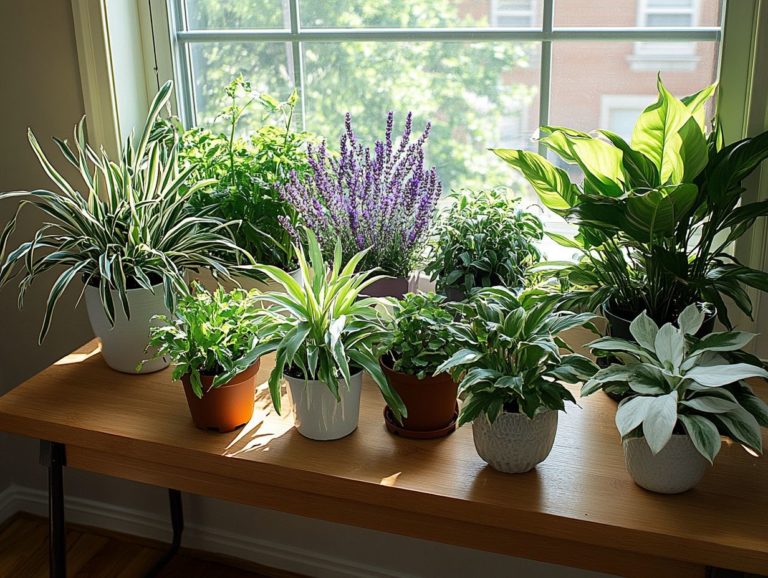Exploring Biological Control for Indoor Pests
Indoor pests can be a relentless nuisance, often prompting you to reach for chemical solutions that may not be the safest choice. Biological control uses living organisms to manage pests. This method offers a safe alternative to chemical pesticides.
Biological control presents a more sustainable and eco-friendly alternative. This article delves into the principles of biological control, identifies common indoor pests, and discusses various natural methods for managing them. It underscores the benefits of these approaches, not just for your home environment but also for your health, providing practical steps for successful implementation.
Dive into this article to learn powerful ways to tackle indoor pests today!
Contents
- Key Takeaways:
- Understanding Biological Control
- Types of Indoor Pests
- Biological Control Methods
- Benefits of Biological Control
- Implementing Biological Control
- Frequently Asked Questions
- What is biological control for indoor pests?
- How does biological control work?
- What types of pests can be controlled using biological control?
- Is biological control safe for humans and pets?
- Can biological control completely eradicate indoor pests?
- What are the benefits of using biological control for indoor pests?
Key Takeaways:
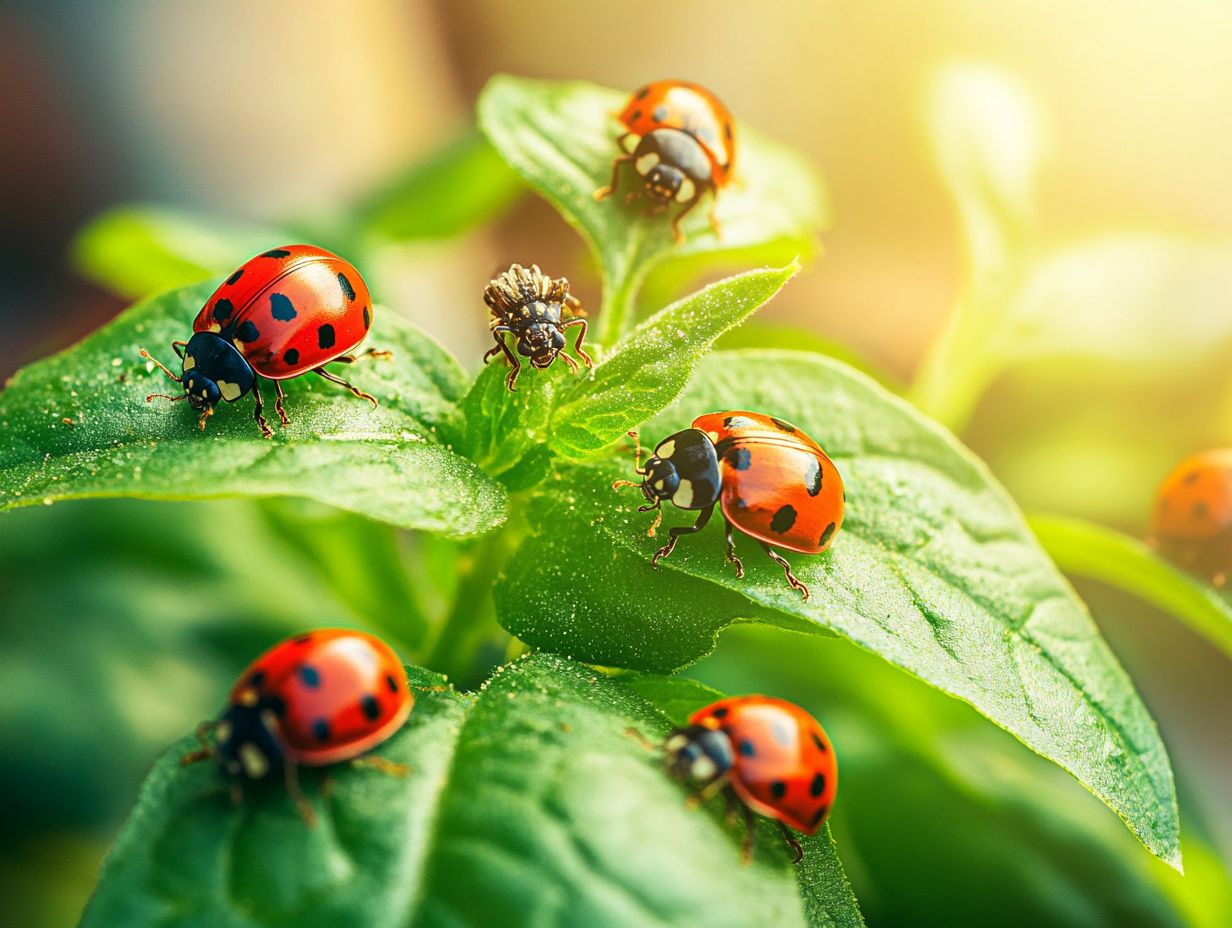
- Biological control uses natural enemies to manage indoor pests and insect pests, reducing the need for harmful chemicals.
- Common indoor pests like cockroaches and ants can be controlled through natural predators and parasites, as well as bacterial and fungal agents.
- Implementing biological control has many benefits, including protecting the environment and promoting better overall health.
Understanding Biological Control
Understanding biological control means looking into effective methods used to manage insect pests through their natural adversaries, including predators, parasitoids, and pathogens. This sustainable approach is a cornerstone of integrated pest management (IPM), which combines different strategies to manage pests effectively while upholding the delicate ecological balance in agricultural settings.
By leveraging the capabilities of beneficial organisms, you can effectively tackle challenges like the gypsy moth and alfalfa weevil, elevating crop protection without dependence on chemical pesticides and enhancing pest management systems.
Definition and Principles
Biological control is the strategic use of living organisms, known as biological control agents, to suppress pest populations, offering you a non-toxic alternative to conventional chemical methods. This practice is grounded in principles such as introducing natural enemies, manipulating habitats, and enhancing the presence of beneficial species, all aimed at effectively managing pest pressures.
You’ll encounter various forms of biological control, including predation, parasitism, and competition, which leverage the natural relationships between organisms to keep pests at bay. The benefits of this approach over traditional chemical pesticides are remarkable. It promotes environmental safety by reducing pesticide runoff, minimizing harm to non-target species, and encouraging biodiversity. Additionally, understanding indoor plant pest resistance can further enhance your pest management strategy.
For example, you might find ladybugs being deployed to combat aphid infestations, while parasitic wasps play a crucial role in controlling caterpillar populations. Additionally, using traps for indoor plant pests can also be an effective strategy. These examples showcase the efficacy of living solutions within integrated pest management systems.
Types of Indoor Pests
The array of indoor pests you encounter can vary significantly, ranging from familiar nuisances like the greenhouse whitefly to the more obscure species that present unique challenges for effective pest management and control in indoor settings, including greenhouse pests.
Common Pests and Their Characteristics
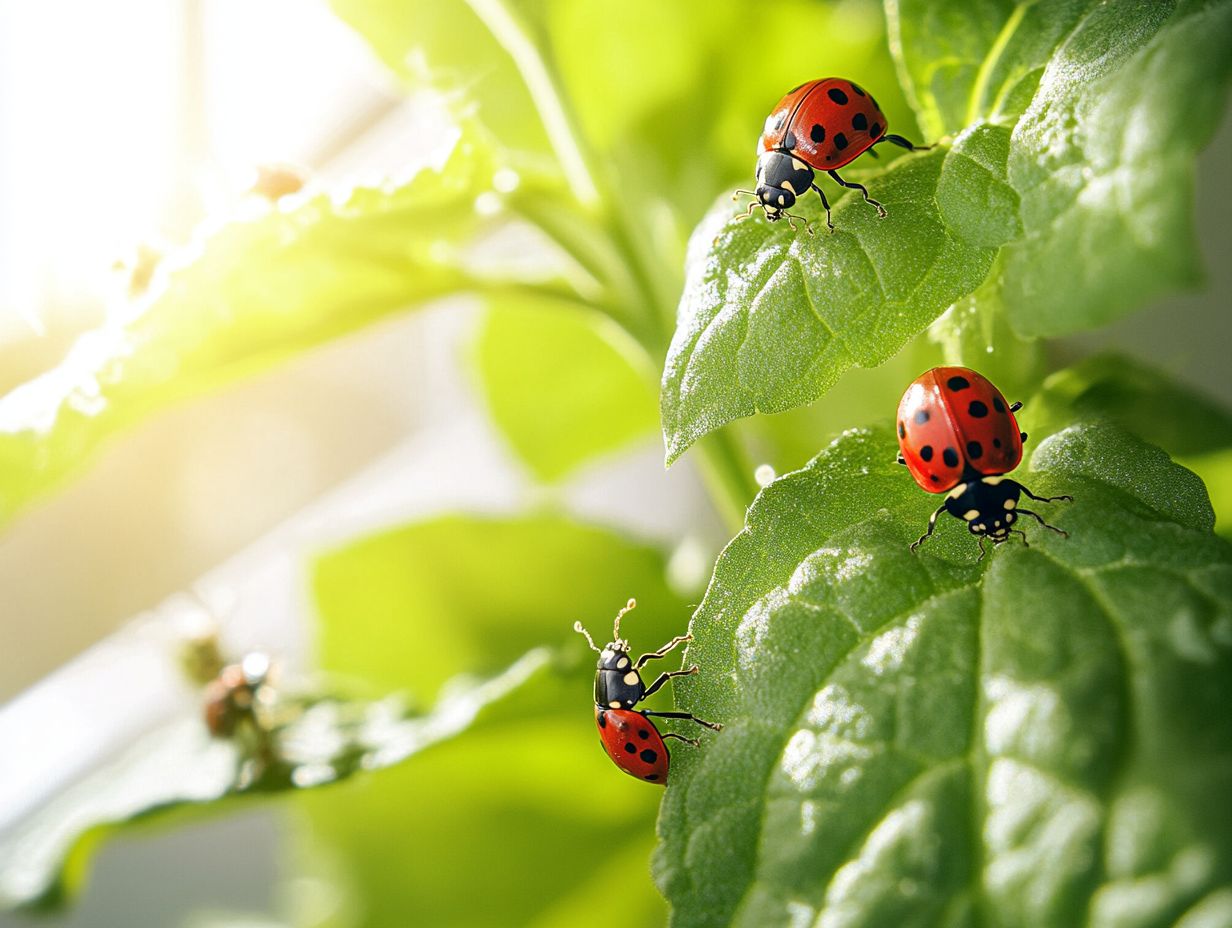
Common indoor pests, such as the greenhouse whitefly and various insect species, can be easily recognized by their unique characteristics and the environmental conditions that support their growth, including temperature and humidity.
Take, for example, aphids. These little pests, with their soft bodies and array of colors, often signal a flourishing indoor plant environment. On the other hand, the spider mite, known for its webbing and speckled appearance, thrives in dry heat.
These pests are notorious for their rapid reproduction, with some life cycles completing in as little as a week when conditions are just right. They particularly favor warm, humid spaces, which provide the moisture and nutrition they crave for optimal growth and reproduction.
By understanding their traits, you can manage infestations effectively and spot the early signs of a potential problem before it escalates.
Biological Control Methods
Biological control methods include simple, effective strategies that leverage natural predators and pathogens to manage pest populations effectively and sustainably.
By using these natural allies, you can achieve balanced ecosystems while minimizing reliance on chemical interventions.
Natural Predators and Parasites
Natural predators and parasites are essential players in the realm of biological control. Beneficial organisms like lady beetles, ground beetles, and predators actively work to reduce pest populations across various ecosystems.
These remarkable creatures help maintain environmental balance by preying on common agricultural pests, such as aphids and caterpillars, that can harm crops.
These natural allies offer significant benefits, including diminished reliance on chemical pesticides that often have harmful side effects for non-target species and the environment.
Take, for instance, parasitic wasps that lay their eggs inside pest larvae, curbing the numbers of harmful insects. This natural approach nurtures healthier ecosystems and champions sustainable agricultural practices.
Imagine a world where pests are kept in check by nature itself!
Bacterial and Fungal Agents
Bacterial and fungal agents, like Bacillus thuringiensis and Entomophaga maimaiga, act as powerful biological insecticides that specifically target pest insects while protecting beneficial organisms.
These microorganisms employ fascinating mechanisms, such as producing toxins that disrupt the digestive systems of their targets or parasitizing them, effectively lowering pest populations without the negative consequences typical of chemical pesticides.
Integrating these agents into your pest management strategies offers a wealth of advantages, including sustainability, reduced environmental impact, and preservation of biodiversity within the agricultural landscape.
By embracing these biological agents, you can effectively control harmful pests while nurturing a healthier balance between pest and predator species.
This approach boosts crop yield and supports long-term soil health and resilience against future pest outbreaks.
Benefits of Biological Control
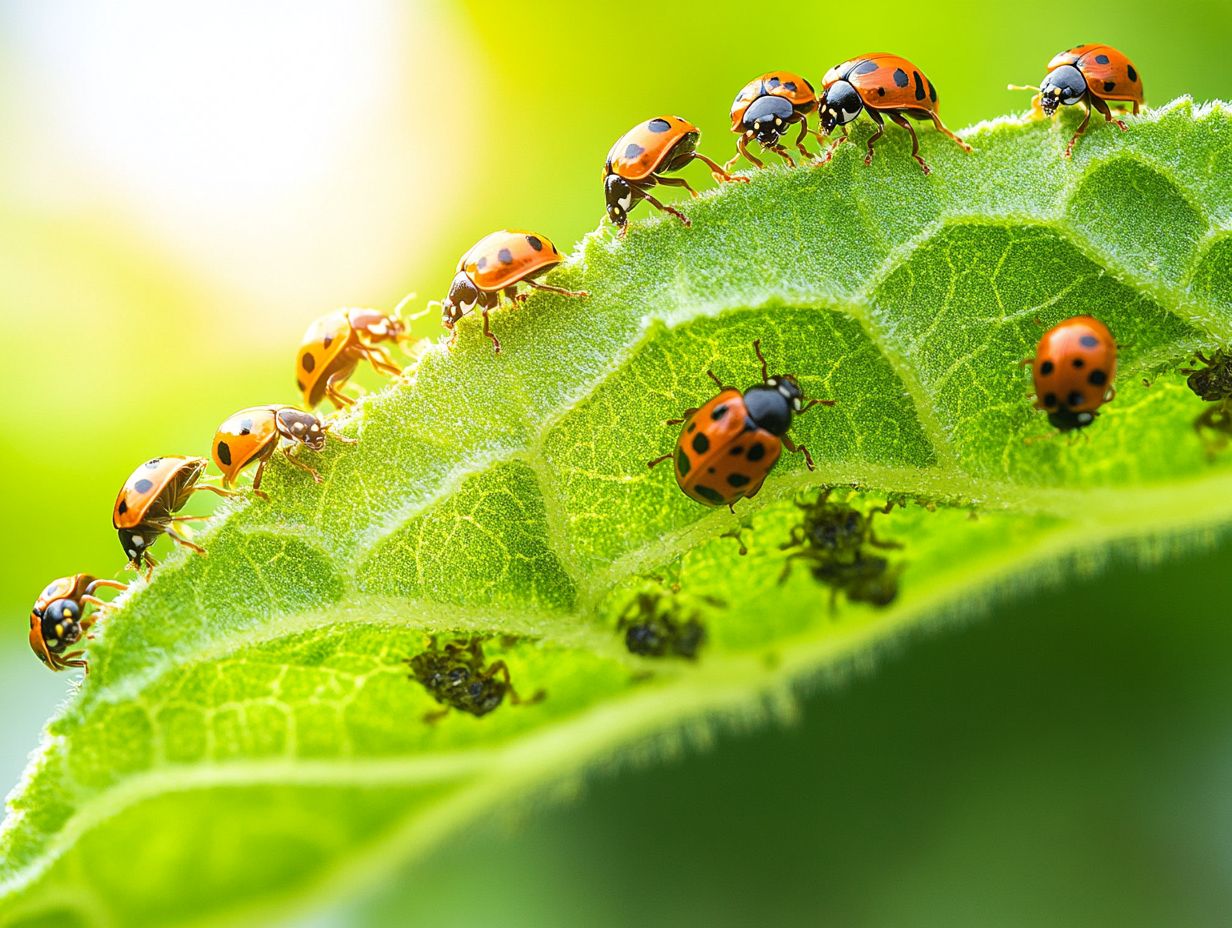
The benefits of biological control offer significant environmental and health advantages. By emphasizing non-toxic methods, you can reduce reliance on chemical pesticides and promote sustainable agriculture practices that are effective and responsible.
Environmental and Health Advantages
You ll find that the environmental and health benefits of biological control are substantial. By reducing pesticide application, you mitigate potential harm to human health and promote healthier ecosystems.
When you harness natural predators and pathogens, you significantly decrease reliance on chemical pesticides, leading to less chemical runoff into waterways.
For instance, a case study in California showed that the use of ladybugs to manage aphid populations resulted in a remarkable 50% reduction in chemical pesticide use among local farmers.
This shift improved the quality of local produce and fostered enhanced biodiversity, allowing beneficial insects to thrive in these habitats.
By advocating for biological control methods, you support a more resilient ecosystem that aids in habitat conservation for various species and sustains essential ecological services such as pollination and soil health.
Implementing Biological Control
Implementing biological control requires a thoughtful approach. This includes understanding pest management systems, engaging in diligent scouting and monitoring, and deciding when to take action based on pest levels.
Such considerations are essential to ensure your pest management strategies, including the use of microbe-based solutions, are effective and sustainable.
Don’t wait for pests to destroy your crops; consider biological control today!
Factors to Consider and Steps to Take
When implementing biological control, focus on key factors like diligent monitoring and accurate pest identification.
Understanding the environmental conditions affecting pests is crucial for your strategy.
Effective monitoring helps you detect pests early, allowing for timely intervention.
Environmental factors such as temperature, humidity, and light impact pest behavior and control methods.
For instance, warmer temperatures can speed up pest reproduction, so stay alert.
Some natural pest controllers thrive in specific conditions, highlighting the need for tailored strategies.
By adapting your methods to local ecosystems, you enhance the effectiveness of your biological control initiatives.
Frequently Asked Questions

What is biological control for indoor pests?
Biological control is a method of pest management that utilizes natural predators, parasites, or pathogens to control and reduce the population of indoor pests. This approach is an exciting, eco-friendly choice compared to chemical or mechanical methods.
How does biological control work?
Biological control works by introducing natural enemies of the target pest into the indoor environment. These natural enemies then attack and feed on the pest, leading to a reduction in their population. This method can be implemented through direct release, augmentation, and conservation of natural enemies.
What types of pests can be controlled using biological control?
Biological control can be used for various indoor pests, including insects, mites, rodents, and other arthropods. Common pests that can be managed using this method include ants, cockroaches, termites, bed bugs, and silverfish.
Is biological control safe for humans and pets?
Yes, biological control is generally safe for humans and pets. The natural enemies used in this method are specific to the target pest and do not harm other organisms. However, it is important to follow proper protocols and guidelines when implementing biological control to ensure safety.
Can biological control completely eradicate indoor pests?
No, biological control may not completely eradicate indoor pests, but it can significantly reduce their population. The effectiveness of this method depends on factors like the type of pest, the environment, and the chosen biological control agent. Often, it works best alongside other pest management methods for optimal results.
What are the benefits of using biological control for indoor pests?
Benefits of biological control for indoor pests include its eco-friendliness, cost-effectiveness, and target specificity. It reduces the need for chemical pesticides, which can harm the environment and human health. Biological control also helps maintain a balance in the ecosystem by promoting natural pest control processes.

